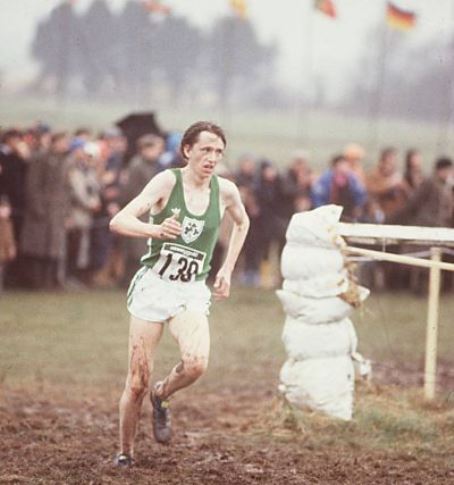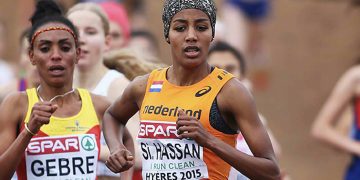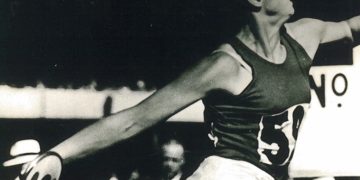RelatedPosts
By Cathal Dennehy
Former World Cross Country champion John Treacy believes the majority of European distance runners have simply given up trying to compete with East Africans, and the Irishman says that in order to arrest the decline in standards, European athletes need to follow the approach of Americans and return to the high-mileage training methods of the 70s.
Treacy, world cross country champion in 1978 and 1979 and a silver medallist in the 1984 Olympic marathon, believes that much of the decline in European distance running today is down to many athletes simply not training hard enough.
“The Europeans, to a large degree, have given up,” he told RunBlogRun in Dublin this week at the launch of the Irish Runner Yearbook. “If you look at the Americans, they’re getting back up there, and they’re training hard. I think athletes have to go back and look at what training was done in the 70s and 80s, increase the volume, increase the intensity; we were knocking out 110, 120 miles a week, and doing quality as part of that.
“We were obviously training very hard, but we also believed we could beat them. Sometimes we were successful, sometimes we weren’t. I think the real issue now is the number of East Africans that Europeans are up against. We raced five Kenyans and five Ethiopians, but they’re coming in waves now.”
Treacy, who currently works as Chief Executive of the Irish Sports Council and whose marathon best of 2:09:15 still stands as the Irish record, believes that too many athletes today, particularly at junior level, are afraid of higher-volume training. “They’re being too cautious,” he said. “In my last year of secondary school [high school], I was running 70 miles a week and doing quality sessions as part of that, and we upped that to 90 when we went to college. You need to do that kind of training over a sustained period of time and you’ll get your strength from it. A lot of the kids now are doing 40 miles a week when they’re finishing school.”
Back in 1975, as an 18-year-old, Treacy decided to follow the well-worn path taken by many successful Irish distance runners and took up an athletics scholarship at Providence College, Rhode Island. Developing in the NCAA system, he feels, was pivotal to his success at world level, and though more Irish athletes are choosing to stay at home these days, Treacy believes the ones that do so are missing out by shunning the traditional scholarship system.
“I think it’s still the best route,” he says. “You need to go to the right college, get the right education, but you’ve two great ingredients in the American system; you’re training with 10 to 20 guys every day of the week. I find and see that a lot of athletes who go to college in Ireland are training individually. I don’t think that can work; it’s very difficult. The other thing is the level of competition you can get when you’re in college in America; I don’t think that can be replicated anywhere in the world.”
Of course, for many European distance runners, the stark reality these days is that they find themselves trapped in something of a catch-22. To truly commit to reaching their peak and challenging the East Africans, they need to train full-time. However, to do so requires a level of financial stability and income that is simply unrealistic to expect in an era when it is increasingly difficult to earn a living from distance running.
While Treacy acknowledges how essential it is to train full-time to compete with the best – and how unrealistic that is for many Europeans – he believes athletes should focus on maximizing their college years to live and train like professional athletes. “The college student should have the time to do it, and then reach a decision then about whether they’re going to be a world class athlete or not at the age of 23 or 24,” he says.
“There are exceptions, but I would say if you haven’t done it by 23 or 24, there’s a strong possibility you won’t do it at that stage. I certainly couldn’t work full-time and run. I tried it myself and it didn’t work. I had to give up the job, go back to America and train full-time and it worked for me. If you’re 26 and training for a marathon and working full-time, it’s a very hard situation.
“If you’re not good enough at that stage, maybe you shouldn’t pursue it; maybe you should just go and enjoy it. There’s times in your life where you have to make those decisions, and it’s an inner belief thing as well that has to help you make that decision – how much you believe you can do it.”
Author

Larry Eder has had a 52-year involvement in the sport of athletics. Larry has experienced the sport as an athlete, coach, magazine publisher, and now, journalist and blogger. His first article, on Don Bowden, America's first sub-4 minute miler, was published in RW in 1983. Larry has published several magazines on athletics, from American Athletics to the U.S. version of Spikes magazine. He currently manages the content and marketing development of the RunningNetwork, The Shoe Addicts, and RunBlogRun. Of RunBlogRun, his daily pilgrimage with the sport, Larry says: "I have to admit, I love traveling to far away meets, writing about the sport I love, and the athletes I respect, for my readers at runblogrun.com, the most of anything I have ever done, except, maybe running itself." Also does some updates for BBC Sports at key events, which he truly enjoys. Theme song: Greg Allman, " I'm no Angel."
View all posts





















